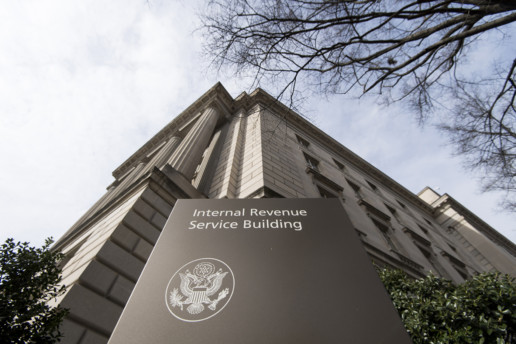The Saxon Advisor - February 2020
Compliance Check
what you need to know
Section 6055/6056 Reporting. Employers must file Forms 1094-B and 1095-B, and Forms 1094-C and 1095-C with the IRS by February 28, 2020 if they are filed on paper.
Form 1099-R Paper Filing. Employers must file Form 1099-R with the IRS by February 28, 2020 if they are filed on paper.
CMS Medicare Part D Disclosure. Employers that provide prescription drug coverage must disclose to the CMS whether the plan’s prescription drug coverage is creditable or non-creditable.
Summary of Material Modifications Distribution. Employers who offer a group health plan that is subject to ERISA must distribute a SMM for plan changes that were adopted at the beginning of the year that are material reductions in plan benefits or services.
Section 6055/6056 Individual Statements (2019 EXTENDED DEADLINE). Applicable large employers (ALEs) that sponsor self-insured health plans must disclose information about plan coverage to covered employees each year. This deadline was extended from January 31, 2020, to March 2, 2020, this year by the IRS.
ADP/ACP Refunds. Corrective refunds for a failed ADP/ACP test must be made by March 15, 2020, to avoid 10 percent excise tax penalties.
Section 6055/6056 Reporting (Electronic Filing Deadline). Applicable large employers (ALEs) that sponsor self-insured health plans are required by Internal Revenue Code Sections 6055 and 6056 to report information about the coverage to the IRS yearly. IRS Forms 1094-C and 1095-C are used to report coverage information. March 31, 2020, is the deadline to submit these forms if employers are filing electronically.
COBRA General Notice. Employers who provide group health plans must provide a written General Notice of COBRA rights to all covered employees and spouses (if applicable). This notice must be provided 90 days after health plan coverage begins.
Summary Plan Description (SPD). Employers who offer group health plans that are subject to ERISA must provide Summary Plan Descriptions (SPD) to employees who newly enrolled at the beginning of the plan year.
Form 1099-R (Electronic Filing Deadline). Employers must file Form 1099-R with the IRS by March 31, 2020, if they are filed electronically.
Form 5330. The Form 5330 excise tax return and payment for excess 2018 ADP/ACP contributions are due March 31, 2020.
In this Issue
- Upcoming Compliance Deadlines
- How to Speak to Your Employees About Their Intimidating Benefits – Featuring Jamie Charlton
- Fresh Brew Featuring Nat Gustafson
- This month’s Saxon U: What Employers Should Know About the SECURE Act
- March’s Saxon U: Saxon’s Humana GO365 Annual Wellness Clinic
- #CommunityStrong: American Heart Association Heart Mini Fundraising
What Employers Should Know About the SECURE Act
Join us for this interactive and educational Saxon U seminar with Todd Yawit, Director of Employer-Sponsored Retirement Plans at Saxon Financial Services, as we discuss what the SECURE Act is and how it impacts your employer-sponsored retirement plan.
How to Speak to Your Employees About Their Intimidating Benefits
Bringing the knowledge of our in-house advisors right to you...
Employers spend thousands annually to secure and offer benefits to their employees. However, a small amount of time and money are devoted to ensuring employees understand and appreciate their benefits. Properly communicating – what you say, how you say it and to whom you say it to – can make a tremendous difference in how employees think, feel and react to their benefits, employer and fellow co-workers.
In this installment of CenterStage, Jamie Charlton, founding partner and CEO of Saxon Financial Services, discusses the importance of offering sound education of benefits to employees, as well as how to effectively communicate their benefits in a clear, concise manner.
Fresh Brew Featuring Nat Gustafson
“Always be prepared.”
This month’s Fresh Brew features Nat Gustafson, an Account Manager at Saxon.
In his free time, Nat enjoys snowboarding. When thinking about his greatest adventure, he remembers traveling around Italy. He lives by the catchphrase of, “Roll up your sleeves.”
Nat’s favorite brew is Rhinegeist Truth. His favorite local spot to grab his favorite brew is Mount Lookout Tavern on Linwood Avenue.
Nat’s favorite snack to enjoy with his brew is Chicken wings.
This Month's #CommunityStrong:
American Heart Association Heart Mini Fundraising
This January, February & March, the Saxon team and their families will be teaming up to raise money for the American Heart Association Heart Mini!
Saxon’s Humana GO365 Annual Wellness Clinic
Learn what Go365 is, how it works, how to create engaged employees and how to maximize the 15% wellness incentive credit from the program.
Monthly compliance alerts, educational articles and events
- courtesy of Saxon Financial Advisors.

The Saxon Advisor - January 2020
Compliance Check
what you need to know
Form W-2s are due January 31, 2020. January 31 is the deadline for employers to distribute Form W-2s to employees. Large employers – employers who have more than 250 W-2s – must include the aggregate cost of health coverage.
Form 1099-Rs are due January 31, 2020. Employers must distribute Form 1099-Rs to recipients of 2019 distributions.
Form 945 Distributions. Form 945s must be distributed to plan participants by January 31, 2020, for 2019 non payroll withholding of deposits if they were not made on time and in full to pay all taxes that are due.
Section 6055/6056 Reporting. Employers must file Forms 1094-B and 1095-B, and Forms 1094-C and 1095-C with the IRS by February 28, 2020 if they are filed on paper.
Form 1099-R Paper Filing. Employers must file Form 1099-R with the IRS by February 28, 2020 if they are filed on paper.
CMS Medicare Part D Disclosure. Employers that provide prescription drug coverage must disclose to the CMS whether the plan’s prescription drug coverage is creditable or non-creditable.
Summary of Material Modifications Distribution. Employers who offer a group health plan that is subject to ERISA must distribute a SMM for plan changes that were adopted at the beginning of the year that are material reductions in plan benefits or services
In this Issue
- Upcoming Compliance Deadlines
- Traditional IRA, Roth IRA, 401(k), 403(b): What’s the Difference?
- Fresh Brew Featuring Scott Langhorne
- This month’s Saxon U: What Employers Should Know About the SECURE Act
- #CommunityStrong: American Heart Association Heart Mini Fundraising
What Employers Should Know About the SECURE Act
Join us for this interactive and educational Saxon U seminar with Todd Yawit, Director of Employer-Sponsored Retirement Plans at Saxon Financial Services, as we discuss what the SECURE Act is and how it impacts your employer-sponsored retirement plan.
Traditional IRA, Roth IRA, 401(k), 403(b): What's the Difference?
Bringing the knowledge of our in-house advisors right to you...
If you haven’t begun saving for retirement yet, don’t be discouraged. Whether you begin through an employer sponsored plan like a 401(k) or 403(b) or you begin a Traditional or Roth IRA that will allow you to grow earnings from investments through tax deferral, it is never too late or too early to begin planning.
“A major trend we see is that if people don’t have an advisor to meet with, they tend to invest too conservatively, because they are afraid of making a mistake,” said Kevin Hagerty, a Financial Advisor at Saxon Financial.
Fresh Brew Featuring Scott Langhorne
“Pay close attention to detail.”
This month’s Fresh Brew features Scott Langhorne, an Account Manager at Saxon.
Scott’s favorite brew is Bud Light. His favorite local spot to grab his favorite brew is wherever his friends and family are.
Scott’s favorite snack to enjoy with his brew is wings.
This Month's #CommunityStrong:
American Heart Association Heart Mini Fundraising
This January, February & March, the Saxon team and their families will be teaming up to raise money for the American Heart Association Heart Mini! They will be hosting a Happy Hour at Fretboard Brewing Company Wednesday, January 29, from 4 p.m. - 7 p.m. to raise money.
Are you prepared for retirement?
Saxon creates strategies that are built around you and your vision for the future. The key is to take the first step of reaching out to a professional and then let us guide you along the path to a confident future.
Monthly compliance alerts, educational articles and events
- courtesy of Saxon Financial Advisors.

DOL updates FLSA regular rate rule
With the New Year right around the corner, it's important to know what rules are being updated. The U.S. Department of Labor has updated the "regular rate of pay" to calculate overtime pay. This standard is used to calculate overtime pay under the Fair Labor Standards Act (FLSA). Read this blog post for more information on this final rule.
The U.S. Department of Labor (DOL) has issued a final rule updating the "regular rate of pay" standard used to calculate overtime pay under the Fair Labor Standards Act (FLSA), according to a notice to be published in the Federal Register Dec. 13.
In the rule, DOL clarifies when certain employer benefits may be excluded when calculating overtime pay for a non-exempt employee, including bona fide meal periods, reimbursements, certain benefit plan contributions, state and local scheduling law payments and more. The rule also clarifies how employers may determine whether a bonus is discretionary or nondiscretionary.
The rule will take effect Jan. 12, 2020.
The rule will likely result in employers taking a closer look at their benefits packages, Susan Harthill, partner at Morgan Lewis, told HR Dive in an emailed statement.
A number of employer advocates that submitted comments on DOL’s Notice of Proposed Rulemaking (NPRM), including the Society for Human Resource Management, supported excluding employee benefits like gym memberships, tuition assistance and adoption and surrogacy services from regular rate calculations. Gym memberships and tuition assistance are generally excludable, according to DOL, but the agency said only some forms of adoption assistance would be excludable and that most surrogacy assistance payments would not be.
Employers also inquired about public transportation and childcare subsidies. In the final rule, DOL said public transportation benefits would not be excludable, noting that the agency "has long acknowledged that employer-provided parking spaces are excludable from the regular rate but commuter subsidies are not." But it did add clarifying language around childcare, saying that while "routinely-provided childcare" must be included in the regular rate, emergency childcare services — if those services are not provided as compensation for hours of employment and are not tied to the quantity or quality of work performed — may be excluded.
DOL also offered additional details about its treatment of tuition reimbursement and education-related benefits. As it stated in the NPRM, the agency said that as long as tuition programs are offered to employees regardless of hours worked or services rendered are "contingent merely on one’s being an employee," such programs qualify as "other similar payments" excludable from the regular rate. This includes payment for an employee's current coursework, online coursework, payment for an employee’s family member’s tuition and certain student-loan repayment plans, DOL said.
HR teams should respond by performing audits of the pay codes for benefits that would be impacted, Tammy McCutchen, shareholder at Littler Mendelson, told HR Dive in an interview: "This is a good time to get your calculations correct." McCutchen suggested that employers conduct audits first before deciding whether to expand benefits options in light of the rule. She added that it's an employer's responsibility to notify payroll providers of any changes to exemptions.
Employers also will need to check state laws and consult with counsel ahead of implementing changes to employees' regular rates, as those laws may differ from DOL's new rule, Harthill said. Moreover, "[t]his is an interpretive rule and it remains to be seen whether courts will defer to DOL's interpretation of the rule or if any resultant exclusions are challenged," she added.
SOURCE: Golden, R. (12 December 2019) "DOL updates FLSA regular rate rule" (Web Blog Post). Retrieved from https://www.hrdive.com/news/dol-updates-flsa-regular-rate-rule/568954/
Labor Department Issues Final Rule on Calculating 'Regular Rate' of Pay
The New Year is bringing changes to the current "regular rate" of pay definition. Recently, the U.S. Department of Labor updated the FLSA definition of the regular rate of pay. The final ruling will take effect on January 15, 2020, and will provide modernized regulations for employers. Read this blog to learn more.
Employers now have more clarity and flexibility about which perks they can include in workers' "regular rate" of pay, which is used to calculate overtime premiums under the Fair Labor Standards Act (FLSA). The U.S. Department of Labor (DOL) announced a final rule that will take effect Jan. 15, 2020.
This is the first time in more than 50 years that the DOL has updated the FLSA definition of the regular rate of pay. Here's how the new law will impact employers.
Reduced Litigation Risk
Currently, the regular rate includes hourly wages and salaries for nonexempt workers, most bonuses, shift differentials, on-call pay and commissions. It excludes health insurance, paid leave, holiday and other discretionary bonuses, and certain gifts.
Many employers weren't sure, however, if certain perks had to be included in the regular rate of pay. So instead of risking costly lawsuits, some employers were choosing not to offer competitive benefits.
Employers were concerned that, for example, if they offered gym memberships to employees, they would have to add the cost to the regular-rate calculation, explained Kathleen Caminiti, an attorney with Fisher Phillips in Murray Hill, N.J., and New York City. The new rule says that gym membership fees and other similar benefits don't have to be included.
The new rule is intended to reduce the risk of litigation and enable employers to provide benefits without fearing that "no good deed goes unpunished," Caminiti said.
The final rule largely tracks the proposed rule, noted Susan Harthill, an attorney with Morgan Lewis in Washington, D.C. But it includes more clarifying examples and provides additional insight into the DOL's views on specific benefits, she said.
This rule was relatively uncontroversial, said Tammy McCutchen, an attorney with Littler in Washington, D.C. She noted that only a few employee and union groups commented against the rule, and those comments addressed very specific points.
"Employees like these benefits, too," she said.
Clarifications
The rule clarifies that employers may exclude the following perks from the regular-rate calculation:
- Parking benefits, wellness programs, onsite specialist treatments, gym access and fitness classes, employee discounts on retail goods and services, certain tuition benefits, and adoption assistance.
- Unused paid leave, including paid sick leave and paid time off.
- Certain penalties employers must pay under state and local scheduling laws.
- Business expense reimbursement for items such as cellphone plans, credentialing exam fees, organization membership dues and travel expenses that don't exceed the maximum travel reimbursement under the Federal Travel Regulation system or the optional IRS substantiation amounts for certain travel expenses.
- Certain sign-on and longevity bonuses.
- Complimentary office coffee and snacks.
- Discretionary bonuses (the DOL noted that the label given to a bonus doesn't determine whether it is discretionary).
- Contributions to benefit plans for accidents, unemployment, legal services and other events that could cause a financial hardship or expense in the future.
"Unlike the upcoming changes to the FLSA white-collar regulations, which will have the force of law, this final rule is predominately interpretative in nature," said Joshua Nadreau, an attorney with Fisher Phillips in Boston. "Nevertheless, you should review these changes carefully to determine whether any of the clarifications are applicable to your workforce."
Employers who follow the rule can show that they made a good-faith effort to comply with the FLSA.
Paying Overtime Premiums
Under the FLSA, nonexempt employees generally must be paid 1.5 times their regular rate of pay for all hours worked beyond 40 in a week. But the regular rate includes more than just an employee's base hourly wage. Employers must consider "all remuneration for employment paid to, or on behalf of, the employee," except for specific categories that are excluded from the calculation, such as:
- Discretionary bonuses.
- Payments made when no work is performed, such as vacation or holiday pay.
- Gifts.
- Irrevocable benefits payments.
- Payments for traveling expenses.
- Premium payments for work performed outside an employee's regular work hours.
- Extra compensation paid according to a private agreement or collective bargaining.
- Income derived from grants or options.
The final rule updated and modernized the items that can be excluded from the calculation, Caminiti said. For example, the prior regulation referenced only holiday and vacation time, whereas the new rule recognizes that many employers lump together paid time off. The rule clarifies that all paid time off will be treated consistently as to whether it should be included in the regular rate.
The DOL eliminated some restrictions on "call-back" and similar payments but maintained that they can't be excluded from an employee's regular rate if they are prearranged.
The rule also addresses meal breaks, scheduling penalties, massage therapy and wellness programs.
"Some of these benefits didn't exist even a decade ago," McCutchen noted.
Harthill observed that the line between discretionary and nondiscretionary bonuses has created uncertainty and litigation. So the final rule's text and preamble give more examples and explanations about certain bonuses in response to commenters' requests. For example, the final rule provides more clarity about sign-on and longevity bonuses, but the DOL declined to specifically address other types of bonuses commenters asked about.
Action Items
"Now is the time for a regular-rate audit," McCutchen said. Compensation specialists should gather a list of all the earnings codes they're currently using for nonexempt employees, note each one they are including in the regular rate and compare that with the new rule to see if changes need to be made.
Most employers presently are not including paid sick time, tuition reimbursement and other perks in the regular-rate calculation, McCutchen noted, and DOL has confirmed the practice.
Now is also a good time for employers to decide if they want to start providing certain perks that are popular with employees, she said.
Harthill noted that it is important for employers to check whether the relevant state law tracks or departs from the federal law, because state laws might have stricter rules about overtime calculations.
SOURCE: Nagele-Piazza, L. (12 December 2019) "Labor Department Issues Final Rule on Calculating 'Regular Rate' of Pay" (Web Blog Post). Retrieved from https://www.shrm.org/ResourcesAndTools/legal-and-compliance/employment-law/Pages/Labor-Department-Issues-Final-Rule-on-Calculating-Regular-Rate-of-Pay-.aspx
IRS updates rules on retirement plan hardship distributions
Recently, the Internal Revenue Service (IRS) finalized updates to the hardship distribution regulations. These new regulations make the requirements more flexible and participant friendly. Read this blog post to learn more about these updated regulations.
Employers who allow for hardship distributions from their 401(k) or 403(b) plans should be aware that the Internal Revenue Service recently finalized updates to the hardship distribution regulations to reflect legislative changes. The new rules make the hardship distribution requirements more flexible and participant-friendly.
Hardship distributions are in-service distributions from 401(k) or 403(b) plans that are available only to participants with an immediate and heavy financial need. Plans are not required to offer hardship distributions. But there are certain requirements if a plan does offer hardship distributions. Generally, a hardship distribution may be made to a participant only if the participant has an immediate and heavy financial need, and the distribution is necessary and not in excess of the amount needed (plus related taxes or penalties) to satisfy that financial need.
An administrator of a 401(k) or 403(b) plan can determine whether a participant satisfies these requirements based on all of the facts and circumstances, or the administrator may rely on certain tests that the IRS has established, called safe harbors.
Over the last fifteen years, Congress has changed the laws that apply to hardship distributions. The new rules align existing IRS regulations with Congress’s legislative changes. Some of the changes are mandatory and some are optional. The new rules make the following changes. The following changes are required.
Elimination of six-month suspension.
Employers may no longer impose a six-month suspension of employee elective deferrals following the receipt of a hardship distribution.
Required certification of financial need.
Employers must now require participants to certify in writing or by other electronic means that they do not have sufficient cash or liquid assets reasonably available, in order to satisfy the financial need and qualify for a hardship distribution.
There were also some optional changes made to hardship distributions.
Removal of the requirement to take a plan loan.
Employers have the option, but are not mandated, to eliminate the requirement that participants take a plan loan before qualifying for a hardship distribution. In order to qualify for a hardship distribution, participants are still required to first take all available distributions from all of the employer’s tax-qualified and nonqualified deferred compensation plans to satisfy the participant’s immediate and heavy financial need. The optional elimination of the plan loan requirement may first apply beginning January 1, 2019.
Expanded safe harbor expenses to qualify for hardship.
The new hardship distribution regulations expand the existing list of pre-approved expenses that are deemed to be an immediate and heavy financial need. Prior to the new regulations, the list included the following expenses:
- Expenses for deductible medical care under Section 213(d) of the Internal Revenue Code;
- Costs related to the purchase of a principal residence;
- Payment of tuition and related expenses for a spouse, child, or dependent;
- Payment of amounts to prevent eviction or foreclosure related to the participant’s principal residence;
- Payments for burial or funeral expenses for a spouse, child, or dependent; and
- Expenses for repair of damage to a principal residence that would qualify for a casualty loss deduction under Section 165 of the Internal Revenue Code.
The new regulations expand this list of permissible expenses by adding a participant’s primary beneficiary under the plan as a person for whom medical, tuition and burial expenses can be incurred. The new regulations also clarify that the immediate and heavy financial need for principal residence repair and casualty loss expenses is not affected by recent changes to Section 165 of the Internal Revenue Code, which allows for a deduction of such expenses only if the principal residence is located in a federally declared disaster zone. Finally, the new regulations add an additional permissible financial need to the list above for expenses incurred due to federally declared disasters.
New contribution sources for hardships.
The law and regulations provide that employers may now elect to allow participants to obtain hardship distributions from safe harbor contributions that employers use to satisfy nondiscrimination requirements, qualified nonelective elective contributions (QNECS), qualified matching contributions (QMACs) and earnings on elective deferral contributions. However, 403(b) plans are not permitted to make hardship distributions from earnings on elective deferrals, and QNECS and QMACs are distributable as hardship distributions only from 403(b) plans not held in a custodial account.
As this list indicates, the new regulations make substantial changes to the hardship distribution rules.
The deadline for adopting this amendment depends on the type of plan the employer maintains and when the employer elects to apply the changes. Plan sponsors should work with their document providers and legal counsel to determine the specific deadlines for making amendments.
SOURCE: Tavares, L. (01 November 2019) "IRS updates rules on retirement plan hardship distributions" (Web Blog Post). Retrieved from https://www.benefitnews.com/opinion/irs-updates-rules-on-401k-403b-plan-hardship-distributions
DOL issues finalized overtime regulation
The DOL recently released their finalized overtime rule. This new rule raises the minimum salary level to $35,568 per year for a full-year worker to earn overtime wages. Read this blog post from Employee Benefit News to learn more about this new rule.
The DOL on Tuesday released its highly anticipated finalized overtime rule, raising the minimum salary level to $35,568 per year for a full-year worker to earn overtime wages.
“Today’s rule is a thoughtful product informed by public comment, listening sessions and long-standing calculations,” Wage and Hour Division Administrator Cheryl Stanton says in a statement. “The DOL’s wage and hour division now turns to help employers comply and ensure that workers will be receiving their overtime pay.”
The final rule, effective Jan. 1, 2020, updates the earnings thresholds necessary to exempt executive, administrative or professional employees from the FLSA’s minimum wage and overtime pay requirements, and allows employers to count a portion of certain bonuses (and commissions) toward meeting the salary level.
The new thresholds account for growth in employee earnings since the currently enforced thresholds were set in 2004. In the final rule, the department is:
- Raising the standard salary level from the currently enforced level of $455 to $684 per week (equivalent to $35,568 per year for a full-year worker);
- Raising the total annual compensation level for highly compensated employees from the currently-enforced level of $100,000 to $107,432 per year;
- Allowing employers to use nondiscretionary bonuses and incentive payments (including commissions) that are paid at least annually to satisfy up to 10% of the standard salary level, in recognition of evolving pay practices; and
- Revising the special salary levels for workers in U.S. territories and in the motion picture industry.
This finalized rule is a shift from the previous administration's proposed rule, which would have doubled the salary threshold.
Under the Obama administration, the Labor Department in 2016 raised the minimum salary to roughly $47,000, extending mandatory overtime pay to nearly 4 million U.S. employees. But the following year, a federal judge in Texas ruled that the ceiling was set so high that it could sweep in some management workers who are supposed to be exempt from overtime pay protections. Business groups and 21 Republican-led states then sued, challenging the rule.
The overturning of the 2016 rule that increased the salary level from the 2004 level has created a lot of uncertainty, says Susan Harthill, a partner with Morgan Lewis. The best way to create certainty is to issue a new regulation, which is what the administration's done, Harthill adds.
While the final rule largely tracks the draft, there are two changes that should be noted: the salary level is $5 higher and the highly compensated employee salary level is dramatically reduced from the proposed level, she says.
“This is an effort to find a middle ground, and while it may be challenged by either or maybe both sides, the DOL’s salary test sets a clear dividing line between employees who must be paid overtime if they work more than 40 hours per week and employees whose eligibility for overtime varies based on their job duties,” Harthill adds.
The DOL estimates 1.3 million employees could now be eligible for overtime pay under this rule (employees who earn between $23,600 and $35,368 no longer qualify for the exemption).
A majority of business groups were critical of Obama’s overtime rule, citing the burdens it placed particularly on small businesses that would be forced to roll out new systems for tracking hours, recordkeeping and reporting.
SHRM, for example, expressed it's opposition to the rule, noting it would have fundamentally changed the rules for employee classification, dramatically increased the salary under which employees are eligible for overtime and provided for automatic increases in the salary level without employer input.
“Today’s announcement finalizing DOL’s overtime rule provides much-needed clarity for workplaces," SHRM says in a statement. "This rule marks the first increase to the salary threshold since 2004 and gives employers more flexibility to plan for the future. We appreciate DOL’s willingness to work with SHRM, other organizations and America’s workers to enact an overtime rule that benefits both employers and their employees.”
But the finalized rule still will have implications for employers.
“Education and health services, wholesale and retail trade, and professional and business services, are the most impacted industries, according to DOL, but all industries are potentially impacted,” Harthill, also former DOL deputy solicitor of labor for national operations, adds. “Also often overlooked is the impact on nonprofits and state and local governments, which are subject to the FLSA and often have lower salaries.”
All companies should be taking a close look at their employees to make sure workers are properly classified, but what they do after that will depend entirely on individual business needs, she says. “Some will hire additional employees to reduce the amount of overtime, while others will just pay overtime if their workers in this salary bracket spend more than 40 hours a week on the job.”
Employers who haven’t already reviewed their exempt workforce should do so now, before the Jan. 1 effective date, Harthill advises.
“They can opt to pay overtime, raise salary levels above $35,368, or review and tighten policies to ensure employees do not work more than 40 hours per week,” she says. “There could be job positions that need to be reclassified and that might have a knock-on effect for employees who earn above the new salary level.”
Many employers increased their salaries when DOL issued the 2016 rule, and some states have higher salary levels, so not all businesses will need to make an adjustment. “But even those employers should review their highly compensated employees — they may still be exempt even if they earn less than $107,432 but the analysis will be more complicated,” she adds.
“We did not hear any objections from employers when these rules were initially proposed," adds Jason Hammersla, vice president of communications at the American Benefits Council. "That said, aside from the obvious compensation and payroll tax implications, this rulemaking is significant for employers who include overtime compensation in the formula for retirement plan contributions as it could increase any required employer contributions."
"The change could also affect plans that exclude overtime pay from the plan’s definition of compensation if the new overtime pay causes the plan to become discriminatory in favor of highly compensated employees," he adds.
SOURCE: Otto, N. (24 September 2019) "DOL issues finalized overtime regulation" (Web Blog Post). Retrieved from https://www.benefitnews.com/news/dol-issues-finalized-overtime-regulation
PCORI Fee Is Due by July 31 for Self-Insured Health Plans
The annual fee for the federal Patient-Centered Outcomes Research Institute (PCORI) is due July 31, 2019. Plans with terms ending after September 30, 2012, and before October 1, 2019, are required to pay an annual PCORI fee. Read this article from SHRM to learn more.
An earlier version of this article was posted on November 6, 2018
The next annual fee that sponsors of self-insured health plans must pay to fund the federal Patient-Centered Outcomes Research Institute (PCORI) is due July 31, 2019.
The Affordable Care Act mandated payment of an annual PCORI fee by plans with terms ending after Sept. 30, 2012, and before Oct. 1, 2019, to provide initial funding for the Washington, D.C.-based institute, which funds research on the comparative effectiveness of medical treatments. Self-insured plans pay the fee themselves, while insurance companies pay the fee for fully insured plans but may pass the cost along to employers through higher premiums.
The IRS treats the fee like an excise tax.
The PCORI fee is due by the July 31 following the last day of the plan year. The final PCORI payment for sponsors of 2018 calendar-year plans is due by July 31, 2019. The final PCORI fee for plan years ending from Jan. 1, 2019 to Sept. 30, 2019, will be due by July 31, 2020.
In Notice 2018-85, the IRS set the amount used to calculate the PCORI fee at $2.45 per person covered by plan years ending Oct. 1, 2018, through Sept. 30, 2019.
The chart below shows the fees to be paid in 2019, which are slightly higher than the fees owed in 2018. The per-enrollee amount depends on when the plan year ended, as in previous years.
| Fee per Plan Enrollee for Payment Due July 31, 2019 |
|
| Plan years ending from Oct. 1, 2018, through Sept. 30, 2019. | $2.45 |
| Fee per Plan Enrollee for Payment Due July 31, 2018 |
|
| Plan years ending from Oct. 1, 2017, through Dec. 31, 2017, including calendar-year plans. | $2.39 |
| Plan years ending from Jan. 1, 2017, through Sept. 30, 2017 | $2.26 |
| Source: IRS. |
Nearing the End
The PCORI fee will not be assessed for plan years ending after Sept. 30, 2019, "which means that for a calendar-year plan, the last year for assessment is the 2018 calendar year," wrote Richard Stover, a New York City-based principal at HR consultancy Buck Global, and Amy Dunn, a principal in Buck's Knowledge Resource Center.
For noncalendar-year plans that end between Jan. 1, 2019 and Sept. 30, 3019, however, there will be one last PCORI payment due by July 31, 2020.
"There will not be any PCORI fee for plan years that end on October 1, 2019 or later," according to 360 Corporate Benefit Advisors.
The PCORI fee was first assessed for plan years ending after Sept. 30, 2012. The fee for the first plan year was $1 per plan enrollee, which increased to $2 per enrollee in the second year and was then indexed in subsequent years based on the increase in national health expenditures.
FSAs and HRAs
In addition to self-insured medical plans, health flexible spending accounts (health FSAs) and health reimbursement arrangements (HRAs) that fail to qualify as “excepted benefits” would be required to pay the per-enrollee fee, wrote Gary Kushner, president and CEO of Kushner & Co., a benefits advisory firm based in Portage, Mich.
As set forth in the Department of Labor's Technical Release 2013-03:
- A health FSA is an excepted benefit if the employer does not contribute more than $500 a year to any employee accounts and also offers a group health plan with nonexcepted benefits.
- An HRA is an excepted benefit if it only reimburses for limited-scope dental and vision expenses or long-term care coverage and is not integrated with a group health plan.
Kushner explained that:
- If the employer sponsors a fully insured group health plan for which the insurance carrier is filing and paying the PCORI fee and the same employer sponsors an employer-funded health care FSA or an HRA not exempted from the fee, employers should only count the employees participating in the FSA or HRA, and not spouses or dependents, when paying the fee.
- If the employer sponsors a self-funded group health plan, then the employer needs to file the form and pay the PCORI fee only on the number of individuals enrolled in the group health plan, and not in the employer-funded health care FSA or HRA.
An employer that sponsors a self-insured HRA along with a fully insured medical plan "must pay PCORI fees based on the number of employees (dependents are not included in this count) participating in the HRA, while the insurer pays the PCORI fee on the individuals (including dependents) covered under the insured plan," wrote Mark Holloway, senior vice president and director of compliance services at Lockton Companies, a benefits broker and services firm based in Kansas City, Mo. Where an employer maintains an HRA along with a self-funded medical plan and both have the same plan year, "the employer pays a single PCORI fee based on the number of covered lives in the self-funded medical plan (the HRA is disregarded)."
Paying PCORI Fees
Self-insured employers are responsible for submitting the fee and accompanying paperwork to the IRS, as "third-party reporting and payment of the fee is not permitted for self-funded plans," Holloway noted.
For the coming year, self-insured health plan sponsors should use Form 720 for the second calendar quarter to report and pay the PCORI fee by July 31, 2019.
"On p. 2 of Form 720, under Part II, the employer needs to designate the average number of covered lives under its applicable self-insured plan," Holloway explained. The number of covered lives will be multiplied by $2.45 for plan years ending on or after Oct. 1, 2018, to determine the total fee owed to the IRS next July.
To calculate "the average number of lives covered" or plan enrollees, employers should use one of three methods listed on pages 8 and 9 of the Instructions for Form 720. A white paper by Keller Benefit Services describes these methods in greater detail.
Although the fee is paid annually, employers should indicate on the Payment Voucher (720-V), located at the end of Form 720, that the tax period for the fee is the second quarter of the year. "Failure to properly designate 'second quarter' on the voucher will result in the IRS's software generating a tardy filing notice, with all the incumbent aggravation on the employer to correct the matter with the IRS," Holloway warned.
A few other points to keep in mind: "The U.S. Department of Labor believes the fee cannot be paid from plan assets," he said. In other words, for self-insured health plans, "the PCORI fee must be paid by the plan sponsor. It is not a permissible expense of a self-funded plan and cannot be paid in whole or part by participant contributions."
In addition, PCORI fees "should not be included in the plan's cost when computing the plan's COBRA premium," Holloway noted. But "the IRS has indicated the fee is, however, a tax-deductible business expense for employers with self-funded plans," he added, citing a May 2013 IRS memorandum.
SOURCE: Miller, S. (2 July 2019) "PCORI Fee Is Due by July 31 for Self-Insured Health Plans" (Web Blog Post). Retrieved from https://www.shrm.org/resourcesandtools/hr-topics/benefits/pages/2019-pcori-fees.aspx
DOL Offers Wage and Hour Compliance Tips in Three Opinion Letters
On July 1, the U.S. Department of Labor (DOL) released three opinion letters that address how to comply with the Fair Labor Standards Act (FLSA) regarding wage and hour issues. Continue reading this blog post to learn how the agency would enforce statutes and regulations specific to these situations.
The U.S. Department of Labor (DOL) issued three new opinion letters addressing how to comply with the Fair Labor Standards Act (FLSA) when rounding employee work hours and other wage and hour issues.
Opinion letters describe how the agency would enforce statutes and regulations in specific circumstances presented by an employer, worker or other party who requests the opinion. Opinion letters are not binding, but there may be a safe harbor for employers that show they relied on one.
The DOL Wage and Hour Division's July 1 letters covered:
- Permissible rounding practices for calculating an employee's hours worked.
- How to apply the "highly compensated employee" exemption from overtime pay to paralegals who are employed by a trade organization.
- How to calculate overtime pay for nondiscretionary bonuses that are paid on a quarterly and annual basis.
Here are the key takeaways for employers.
Rounding Practices
One letter reviewed whether an organization's rounding practices are permissible under the Service Contract Act (SCA), which requires government contractors and subcontractors to pay prevailing wages and benefits and applies FLSA principles to calculate hours worked.
The employer's payroll software extended employees' clocked time to six decimal points and then rounded that number to two decimal points. When the third decimal was less than .005, the second decimal was not adjusted, but when the third decimal was .005 or greater, the second decimal was rounded up by 0.01. Then the software calculated daily pay by multiplying the rounded daily hours by the SCA's prevailing wage.
Employers may round workers' time if doing so "will not result, over a period of time, in failure to compensate the employees properly for all the time they have actually worked," according to the FLSA.
"It has been our policy to accept rounding to the nearest five minutes, one-tenth of an hour, one-quarter of an hour, or one-half hour as long as the rounding averages out so that the employees are compensated for all the time they actually work," the opinion letter said.
Based on the facts provided, the DOL concluded that the employer's rounding practice complied with the FLSA and the SCA. The rounding practice was "neutral on its face" and appeared to average out so that employees were paid for all the hours they actually worked.
For employers, the letter provides two significant details, said Marty Heller, an attorney with Fisher Phillips in Atlanta. First, it confirms that the DOL applies the FLSA's rounding practices to the SCA. Second, it confirms the DOL's position that computer rounding is permissible, at least when the rounding involves a practice that appears to be neutral and does not result in the failure to compensate employees fully over a period of time, he said.
Patrick Hulla, an attorney with Ogletree Deakins in Kansas City, Mo., noted that the employer's rounding practice in this case differed from many employers' application of the principle. Specifically, the employer was rounding time entries to six decimal places. Most employers round using larger periods of time—in as many as 15-minute increments, he said.
"Employers taking advantage of permissible rounding should periodically confirm that their practices are neutral, which can be a costly and time-consuming exercise," he suggested.
Exempt Paralegals
Another letter analyzed whether a trade organization's paralegals were exempt from the FLSA's minimum wage and overtime requirements. Under the FLSA's white-collar exemptions, employees must earn at least $23,660 and perform certain duties. However, employees whose total compensation is at least $100,000 a year are considered highly compensated employees and are eligible for exempt status if they meet a reduced duties test, as follows:
- The employee's primary duty must be office or nonmanual work.
- The employee must "customarily and regularly" perform at least one of the bona fide exempt duties of an executive, administrative or professional employee.
Employers should note that the DOL's proposed changes to the overtime rule would raise the regular salary threshold to $35,308 and the highly compensated salary threshold to $147,414.
Because "a high level of compensation is a strong indicator of an employee's exempt status," the highly compensated employee exemption "eliminates the need for a detailed analysis of the employee's job duties," the opinion letter explained.
The paralegals described in the letter appeared to qualify for the highly compensated employee exemption because all their duties were nonmanual, they were paid at least $100,000 a year, and they "customarily and regularly" perform at least one duty under the administrative exemption.
The letter cited "a litany of the paralegals' job duties and responsibilities—including keeping and maintaining corporate and official records, assisting the finance department with bank account matters, and budgeting—that are directly related to management or general business operations," the DOL said.
The DOL noted that some paralegals don't qualify for the administrative exemption because their primary duties don't include exercising discretion and independent judgment on significant matters. But the "discretion and independent judgment" factor doesn't have to be satisfied under the highly compensated employee exception.
Calculating Bonuses
The third letter discussed whether the FLSA requires an employer to include a nondiscretionary bonus that is a fixed percentage of an employee's straight-time wages received over multiple workweeks in the calculation of the employee's regular rate of pay at the end of each workweek.
Under the FLSA, nonexempt employees must be paid at least 1 1/2 times their regular rate of pay for hours worked beyond 40 in a workweek, unless they are covered by an exemption—but the regular rate is based on more than just the employee's hourly wage. It includes all remuneration for employment unless the compensation falls within one of eight statutory exclusions. Nondiscretionary bonuses count as remuneration and must be included in the calculation.
"An employer may base a nondiscretionary bonus on work performed during multiple workweeks and pay the bonus at the end of the bonus period," according to the opinion letter. "An employer, however, is not required to retrospectively recalculate the regular rate if the employer pays a fixed percentage bonus that simultaneously pays overtime compensation due on the bonus."
The annual bonus, in this case, was not tied to straight-time or overtime hours. Based on the facts provided by an employee, the DOL said that after the employer pays the annual bonus, it must recalculate the regular rate for each workweek in the bonus period and pay any overtime compensation that is due on the annual bonus.
For the quarterly bonuses, the employee received 15 percent of his straight-time and overtime wages so they "simultaneously include all overtime compensation due on the bonus as an arithmetic fact," the DOL said.
SOURCE: Nagele-Piazza, L.(2 July 2019) "DOL Offers Wage and Hour Compliance Tips in Three Opinion Letters" (Web Blog Post). Retrieved from https://www.shrm.org/ResourcesAndTools/legal-and-compliance/employment-law/Pages/DOL-Offers-Wage-and-Hour-Compliance-Tips-in-Three-Opinion-Letters.aspx
DOL Focuses on ‘Joint Employer’ Definition
On April 1, the U.S. Department of Labor (DOL) announced a proposed rule that narrows the definition of "joint employer" under the Fair Labor Standards Act (FLSA). Read this blog post from SHRM to learn more about this proposed rule.
The U.S. Department of Labor (DOL) announced on April 1 a proposed rule that would narrow the definition of "joint employer" under the Fair Labor Standards Act (FLSA).
The proposed rule would align the FLSA's definition of joint-employer status to be consistent with the National Labor Relations Board's proposed rule and update the DOL's definition, which was adopted more than 60 years ago.
Four-Factor Test
The proposal addresses the circumstances under which businesses can be held jointly responsible for certain wage violations by contractors or franchisees—such as failing to pay minimum wage or overtime. A four-factor test would be used to analyze whether a potential joint employer exercises the power to:
- Hire or fire an employee.
- Supervise and control an employee's work schedules or employment conditions.
- Determine an employee's rate and method of pay.
- Maintain a worker's employment records.
The department's proposal offers guidance on how to apply the test and what additional factors should and shouldn't be considered to determine joint-employer status.
"This proposal would ensure employers and joint employers clearly understand their responsibilities to pay at least the federal minimum wage for all hours worked and overtime for all hours worked over 40 in a workweek," according to the DOL.
In 2017, the department withdrew an interpretation that had been issued by former President Barack Obama's administration that broadly defined "joint employer."
The Obama-era interpretation was expansive and could be taken to apply to many companies based on the nature of their business and relationships with other companies—even when those relationships are not generally understood to create a joint-employment relationship, said Mark Kisicki, an attorney with Ogletree Deakins in Phoenix.
The proposed test aligns with a more modern view of the workplace, said Marty Heller, an attorney with Fisher Phillips in Atlanta. The test is a modified version of the standard that some federal courts already apply, he noted.
Additional Clarity
Significantly, the proposed rule would remove the threat of businesses being deemed joint employers based on the mere possibility that they could exercise control over a worker's employment conditions, Heller said. A business may have the contractual right under a staffing-agency or franchise agreement to exercise control over employment conditions, but that's not the same as doing so.
The proposal focuses on the actual exercise of control, rather than potential (or reserved) but unexercised control, Kisicki explained.
The rule would also clarify that the following factors don't influence the joint-employer analysis:
- Having a franchisor business model.
- Providing a sample employee handbook to a franchisee.
- Allowing an employer to operate a facility on the company's grounds.
- Jointly participating with an employer in an apprenticeship program.
- Offering an association health or retirement plan to an employer or participating in a plan with the employer.
- Requiring a business partner to establish minimum wages and workplace-safety, sexual-harassment-prevention and other policies.
"The proposed changes are designed to reduce uncertainty over joint employer status and clarify for workers who is responsible for their employment protections, promote greater uniformity among court decisions, reduce litigation and encourage innovation in the economy," according to the DOL.
The proposal provides a lot of examples that are important in the #MeToo era, said Tammy McCutchen, an attorney with Littler in Washington, D.C., and the former head of the DOL's Wage and Hour Division under President George W. Bush.
Importantly, companies would not be deemed joint employers simply because they ask or require their business partners to maintain anti-harassment policies, provide safety training or otherwise ensure that their business partners are good corporate citizens, she said.
Review Policies and Practices
Employers and other interested parties will have 60 days to comment on the proposed rule once it is published in the Federal Register. The DOL will review the comments before drafting a final rule—which will be sent to the Office of Management and Budget for review before it is published.
"Now is the time to review the proposal and decide if you want to submit a comment," Heller said. Employers that wish to comment on the proposal may do so by visiting www.regulations.gov.
"Take a look at what's been proposed, look at the examples in the fact sheet and the FAQs," McCutchen said. Employers may want to comment on any aspects of the examples that are confusing or don't address a company's particular circumstances. "Start thinking about your current business relationships and any adjustments that ought to be made," she said, noting that the DOL might make some changes to the rule before it is finalized.
"The proposed rule will not be adopted in the immediate future and will be challenged at various steps by worker-advocacy groups, so it will be quite some time before there is a tested, final rule that employers can safely rely upon," Kisicki said.
SOURCE: Nagele-Piazza, L. (1 April 2019) "DOL Focuses on ‘Joint Employer’ Definition" (Web Blog Post). Retrieved from https://www.shrm.org/resourcesandtools/legal-and-compliance/employment-law/pages/labor-department-seeks-to-revise-joint-employer-rule.aspx
DOL proposes $35K overtime threshold
Recently, the Department of Labor proposed an increase in the salary threshold for overtime eligibility. The current overtime threshold is set at $23, 660. Continue reading this blog post to learn more about this proposed change.
The Labor Department proposed to increase the salary threshold for overtime eligibility to $35,308 a year, the agency announced late Thursday.
If finalized, the rule’s threshold — up from the current $23,660 — would expand overtime eligibility to more than a million additional U.S. workers, far fewer than an Obama administration rule that was struck down by a federal judge in 2017.
Unless exempt, employees covered by the Fair Labor Standards Act must receive at least time and one-half their regular pay rate for all hours worked over 40 in a workweek.
The proposal doesn’t establish automatic, periodic increases of the salary threshold as the Obama proposal had. Instead, the department is asking the public to weigh in on whether and how the Labor Department might update overtime requirements every four years.
The department’s long-awaited proposal comes after months of speculation from employers and will likely be a target of legal challenges from business groups concerned about rising administrative challenges of the rule. The majority of business groups were critical of Obama’s overtime rule, citing the burdens it placed particularly on small businesses that would be forced to roll out new systems for tracking hours, recordkeeping and reporting.
Labor Secretary Alexander Acosta said in a statement that the new proposal would “bring common sense, consistency, and higher wages to working Americans.”
Under the Obama administration, the Labor Department in 2016 doubled the salary threshold to roughly $47,000, extending mandatory overtime pay to nearly 4 million U.S. employees. But the following year, a federal judge in Texas ruled that the ceiling was set so high that it could sweep in some management workers who are supposed to be exempt from overtime pay protections. Business groups and 21 Republican-led states then sued, challenging the rule.
The Department said it is asking for public comment for periodic review to update the salary threshold.
SOURCE: Mayer, K. (7 March 2019) "DOL proposes $35K overtime threshold" (Web Blog Post). Retrieved from https://www.employeebenefitadviser.com/news/dol-proposes-35k-overtime-threshold?brief=00000152-1443-d1cc-a5fa-7cfba3c60000










